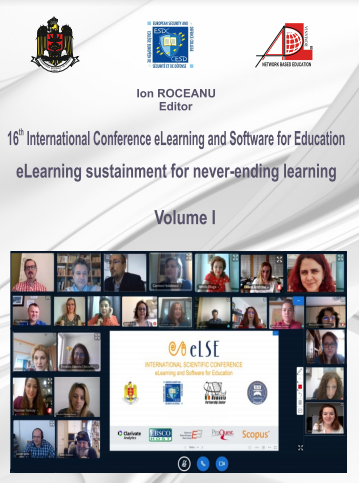SENTIMENT ANALYSIS BASED ON DEEP LEARNING TECHNIQUES APPLIED TO CHILDREN IN LOGICAL GAMES FROM NONFORMAL EDUCATION
SENTIMENT ANALYSIS BASED ON DEEP LEARNING TECHNIQUES APPLIED TO CHILDREN IN LOGICAL GAMES FROM NONFORMAL EDUCATION
Author(s): Dan MUNTEANU, Nicoleta MunteanuSubject(s): Preschool education, School education, Educational Psychology, Developmental Psychology, Behaviorism, Pedagogy
Published by: Carol I National Defence University Publishing House
Keywords: sentiment analysis; nonformal education; logical games; deep learning; automatic feedback;
Summary/Abstract: This paper presents an analysis of the behavioral and temperamental changes of children in non-formal education lessons within the Logic Games discipline. The experimental setup was made using 2 video cameras that alternatively recorded and monitored groups of 2 children during the lessons from the Logic Games discipline for the entire scholar year. Emotion plays an important role in the lesson of non-formal education. Chess as part of the Logic Games involves the training of qualities such as will, ambition, perseverance, attention to detail, distributive attention, patience, evaluation and anticipation of many alternatives and possibilities to move both your own and your opponent's and to choose the moves. optimal. It is very important to be mentally trained to deal with the negative emotions generated by losing or losing the match. Therefore, before learning how to win you must learn how to lose. The sentiment analysis in this paper refers only to the automatic recognition and identification of facial expressions. The images extracted from the video recordings were processed, and then classified into the categories: happy, sad, angry, disappointed, pleasantly surprised, proud, panicked / worried or stressed Deep Learning techniques such as Convolutional Neuronal Network, RCNN, Faster RCNN and Mask RCNN and Transfer Learning technique were used to classify the images. The contribution of the paper is given by the application of these image classification algorithms in the non-formal education process. There was a correlation between the feelings detected, frequency of occurrence and the end result of the game in order to improve the educational process to optimize the automatic feedback needed by the teacher to adjust the instructional-educational process, benefiting from the support of an automatic assistant. The results were illustrated in graphs regarding the evolution of the behavioral states/the flow of feelings of the children during lessons throughout the experiment.
Journal: Conference proceedings of »eLearning and Software for Education« (eLSE)
- Issue Year: 16/2020
- Issue No: 01
- Page Range: 57-65
- Page Count: 9
- Language: English

